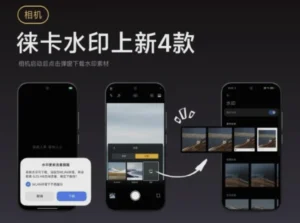Xiaomi Signals End of Life EOL 2025 for Nine Popular Devices This August: What You Need to Know
Hey Xiaomi fans! It’s that time again where we have to talk about the inevitable for some of our beloved devices. Xiaomi, the brand we all know and love for packing so much tech into accessible packages, has announced that nine of their smartphones are officially hitting the “End of Life” (EOL) status this August 2025. This means no more software updates or crucial security patches for them. Let’s dive into what this means for you and your device.
The Devices Saying Goodbye to Updates
Gathering info from our go-to tech sources like Gizchina, XiaomiTime, and Nokiamob, we’ve got the full list of the nine devices that are officially done with regular updates. It’s a mixed bag, covering flagship, mid-range, and entry-level models, so chances are some of you might be rocking one of these.
Here’s the rundown:
- Xiaomi 11T
- Xiaomi 11T Pro
- Xiaomi Mi 11 Lite 5G NE
- Xiaomi Mi 11 LE
- Redmi A1
- Redmi A1+
- Redmi 11 Prime 4G
- POCO M5
- POCO C50

A Closer Look at the Affected Devices
It’s always good to know the history of these phones. The Xiaomi 11T and 11T Pro, released back in 2021, have had a pretty solid run, even making the jump to HyperOS 1 with Android 14. They’ve enjoyed consistent monthly security patches, which is great, but their journey for official updates concludes now.
On the mid-range front, the Xiaomi Mi 11 Lite 5G NE and Mi 11 LE also got a good chunk of updates, even reaching HyperOS 2 with Android 14. That’s a decent lifespan for these niche models. Then we have the Redmi 11 Prime 4G and the POCO M5. These were running HyperOS 1 with Android 14, but we’ve seen updates become less frequent for them lately, which was a pretty clear sign their EOL was approaching.
For the entry-level crew, the Redmi A1, A1+, and POCO C50 originally launched with MIUI 13 on Android 12. It’s pretty standard for budget devices to have a shorter support window, and they haven’t seen major updates in over a year, so this news isn’t entirely unexpected for them.
Key Dates to Mark
Mark your calendars, folks. The POCO M5 will officially stop receiving updates on September 6, 2025. The rest of the pack – those other eight devices – will follow suit on September 23, 2025. So, no more new features, system upgrades, or security fixes from this point onwards.
So, What Does This Mean for You?
This “End of Life” status isn’t just a technicality; it has real-world implications for your daily usage:
- Security Vulnerabilities:
This is the big one. Without regular security patches, your phone can become an easier target for malware and cyber threats. If you do sensitive stuff like online banking or handle private data on your phone, this is definitely a concern. - Functionality & Compatibility:
Your phone will still work, of course! But it won’t get any new bells and whistles. Over time, some apps might start refusing to run if they demand newer versions of Android than what your phone has. - Privacy Risks:
Those unpatched exploits can potentially compromise your privacy, as malicious actors could exploit them to get access to your data.
What Are Your Options Now?
Got one of these devices? Don’t panic! Here’s what you can do:
- Keep Using It (With Caution):
Your phone will still be functional for everyday tasks like calls, texts, and browsing. However, it’s wise to steer clear of highly sensitive activities like online banking or handling confidential information. - Explore Custom ROMs:
For the technically inclined, installing a custom ROM like LineageOS or Pixel Experience can breathe new life into your device with unofficial updates. Just remember, this requires a bit of know-how and might void your warranty. - Time for an Upgrade:
Xiaomi has a fantastic lineup of newer devices that come with guaranteed years of software support. Their mid-range offerings in 2025, in particular, offer a sweet spot of performance and value. - Third-Party App Enhancements:
Some users have found success with apps from the Play Store that aim to unlock extra features or manage system apps. While these can add some functionality, they don’t replace the critical security patches from Xiaomi.
Understanding Xiaomi’s Update Policy
It’s worth noting that Xiaomi has been stepping up its game with software updates. Generally, their Mi series phones get three Android version updates, Redmi Notes get two, and regular Redmi phones get one. Plus, most devices get at least two years of security patches, with flagships often getting three or more. Still, once a device hits EOL, regular updates stop, though critical security patches might occasionally be released for severe vulnerabilities.
How to Check Your Device’s Status
Want to be absolutely sure about your device’s support status? You can always check Xiaomi‘s official security update portal. It’s a handy resource that lists release dates and EOL dates for each model, helping you plan ahead.
Embracing the Future of Xiaomi
The end of software support for these nine Xiaomi devices is a natural part of the tech cycle. While they’ve served many users well, it’s crucial to be aware of the security implications of using unpatched software. If your device is on this list, it might be time to consider an upgrade to one of Xiaomi’s newer models or explore the custom ROM route if you’re comfortable with the technicalities. Staying informed is key to keeping your digital life secure and up-to-date!







